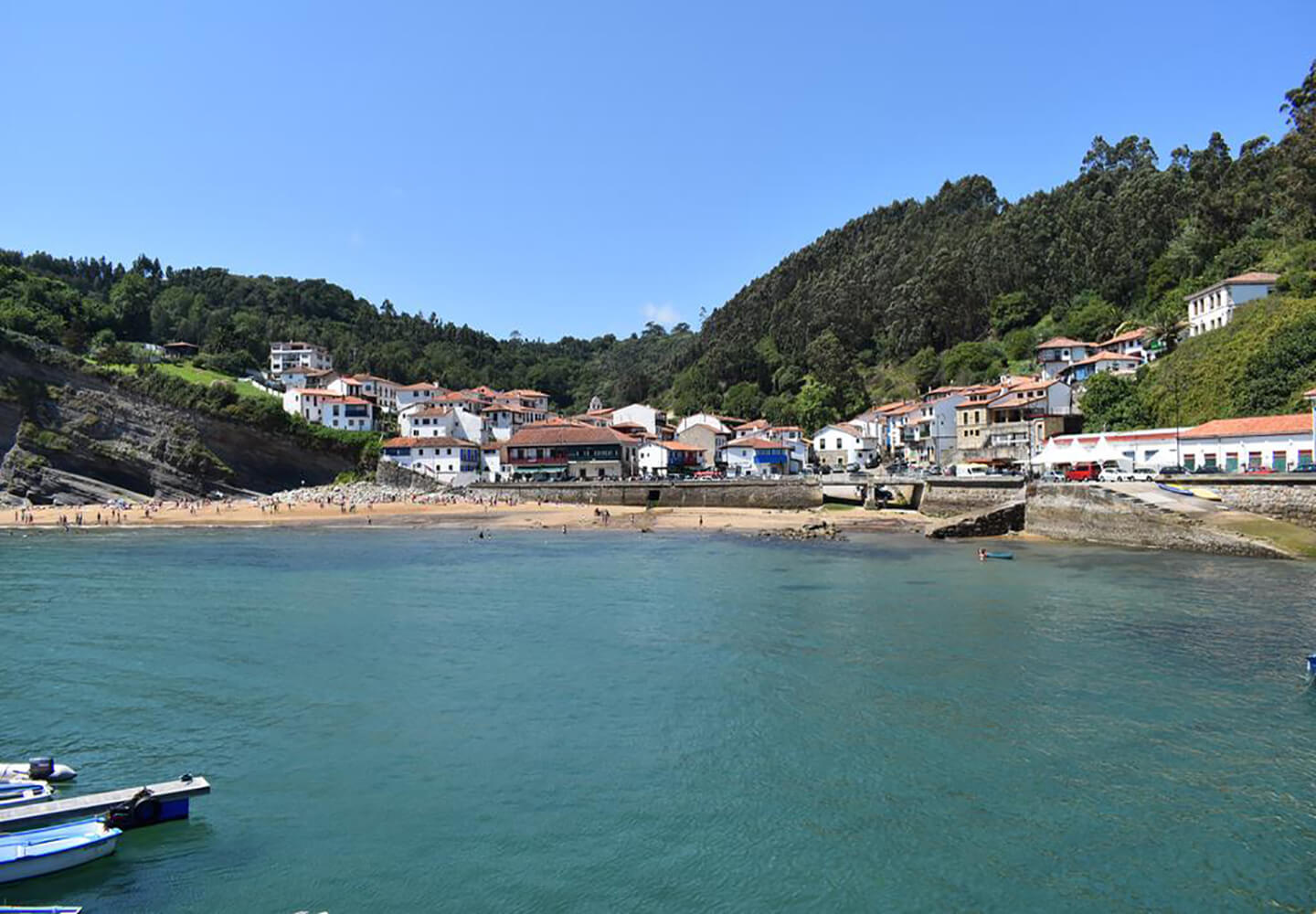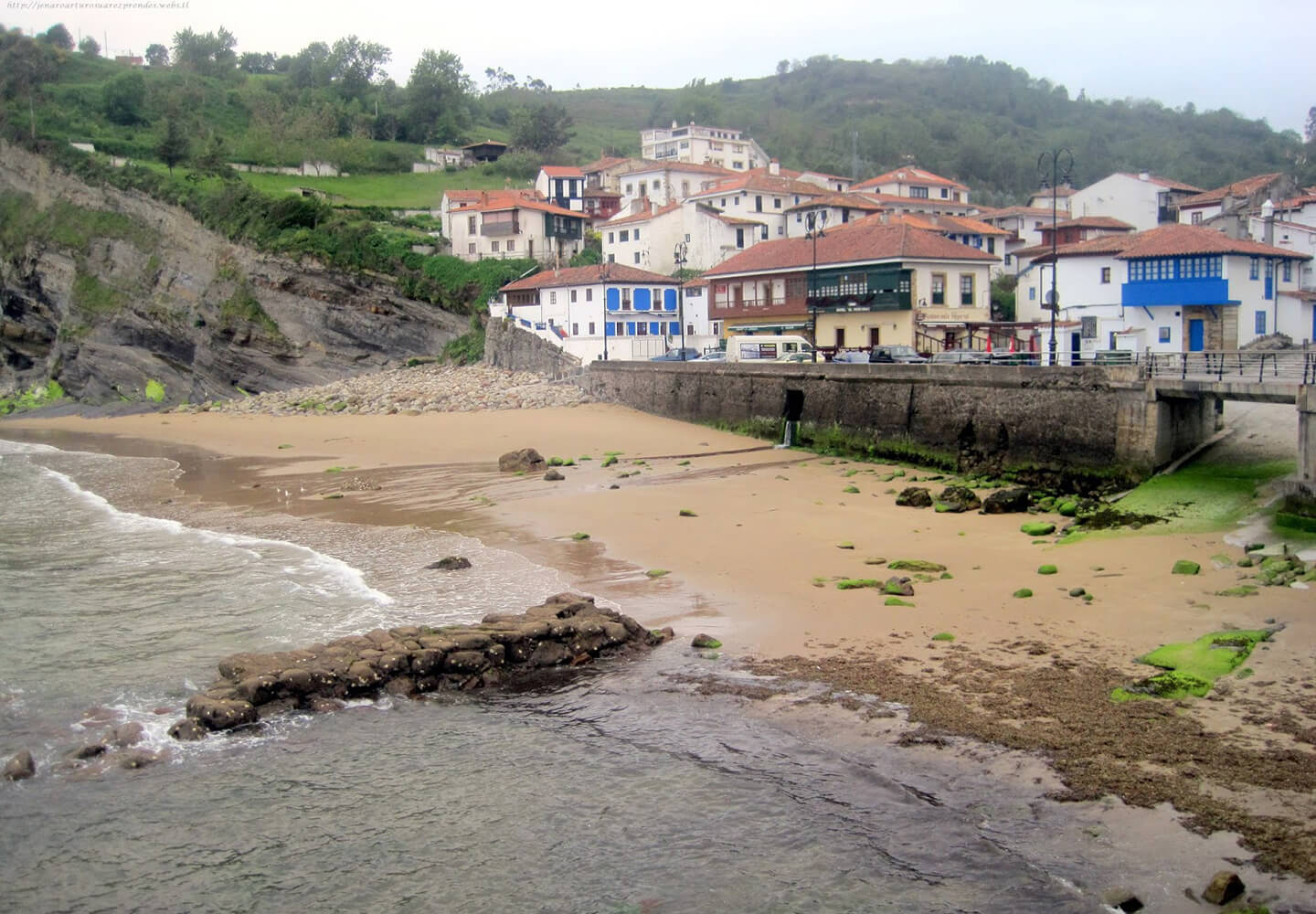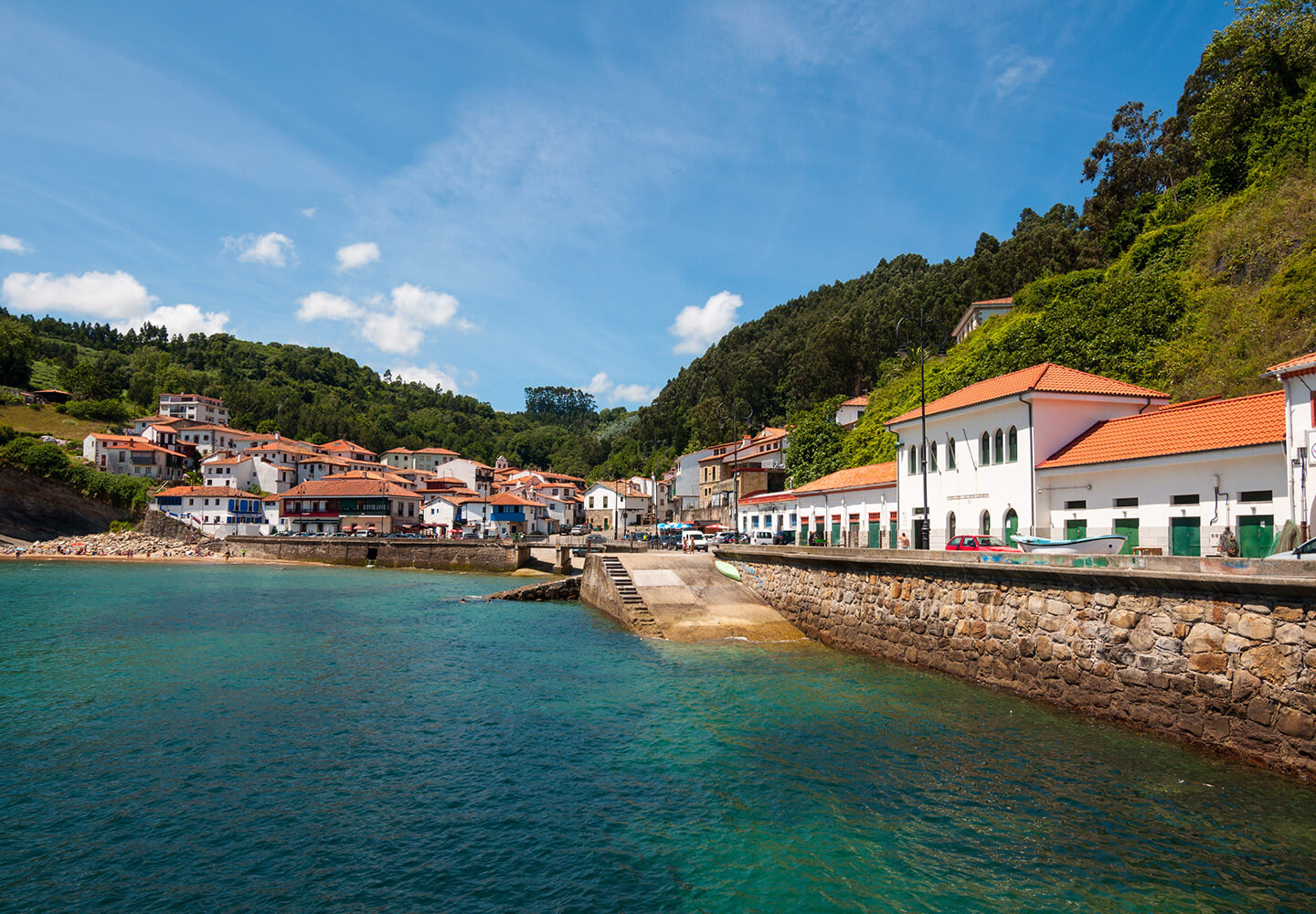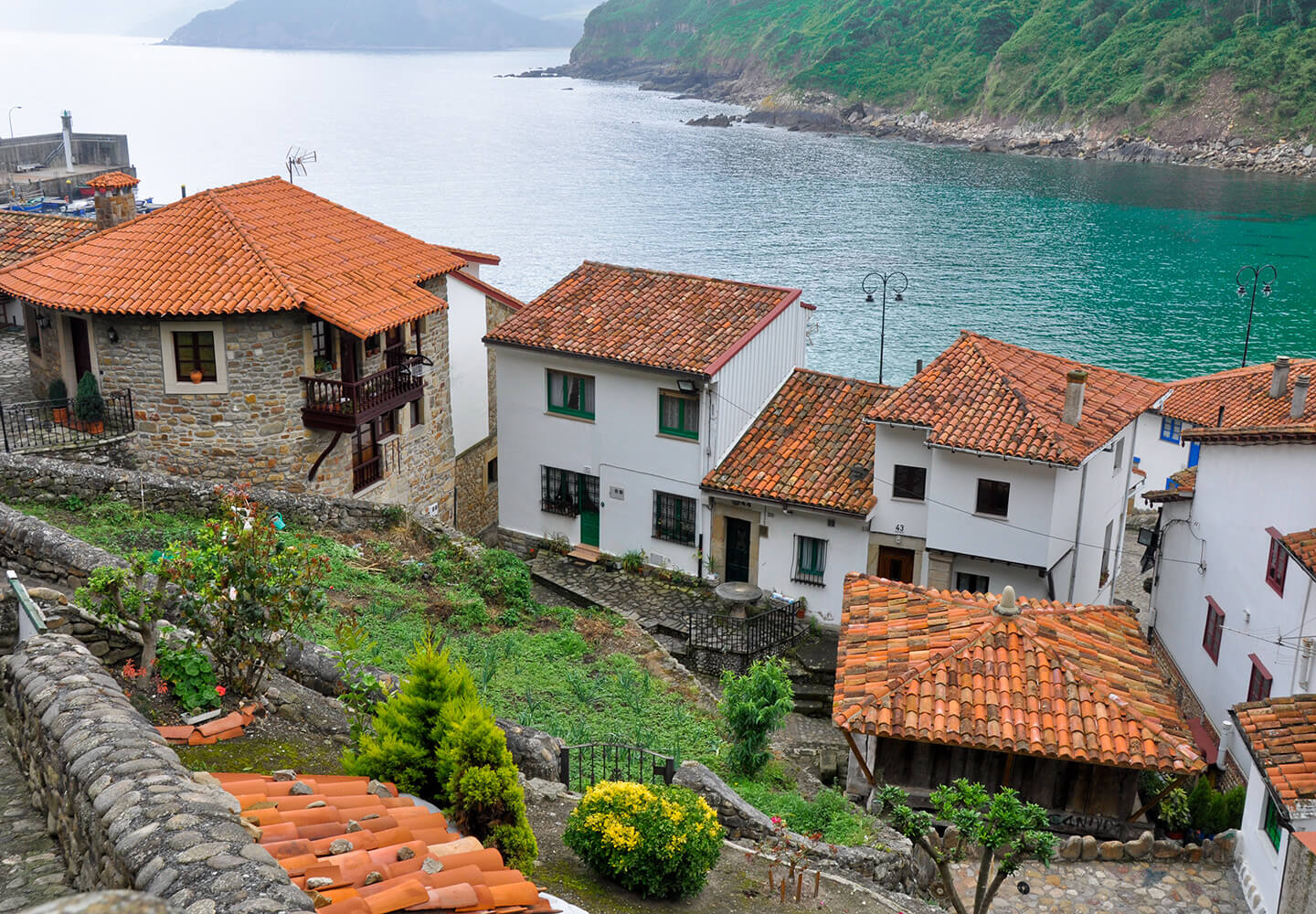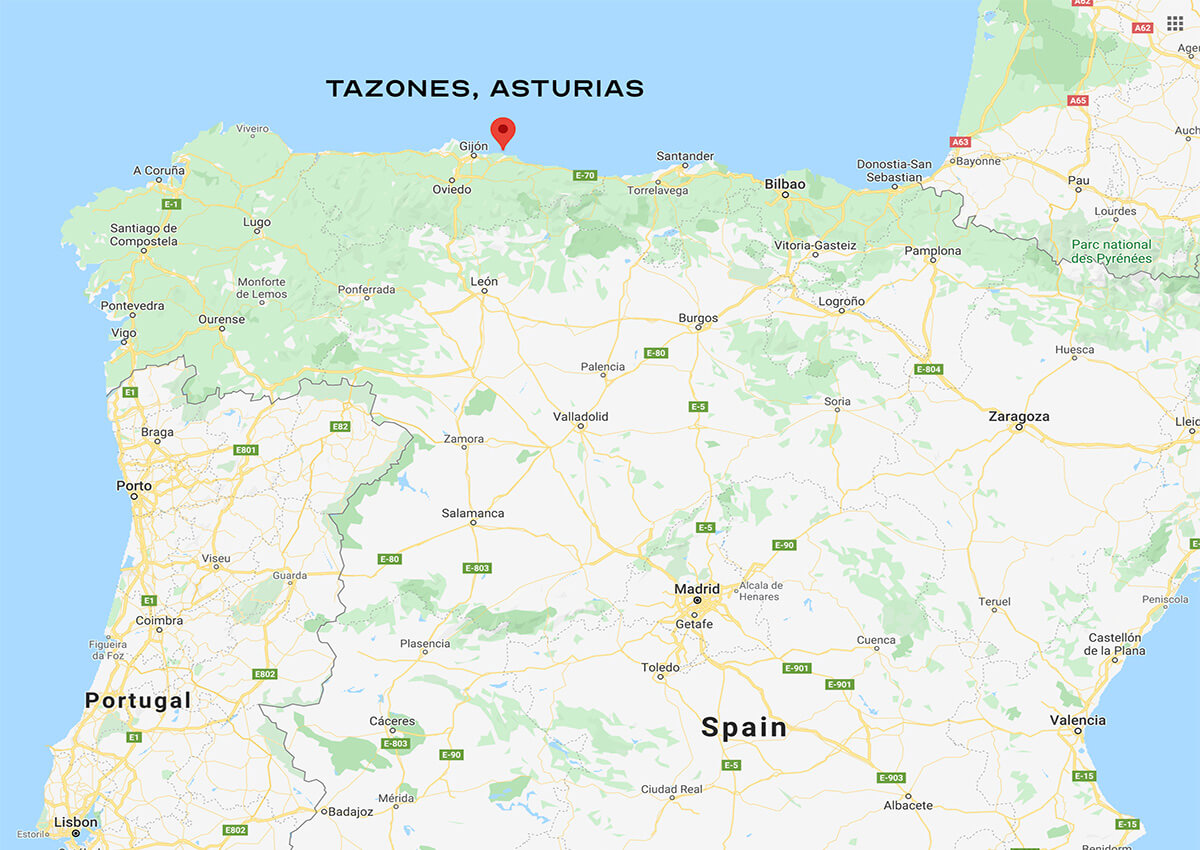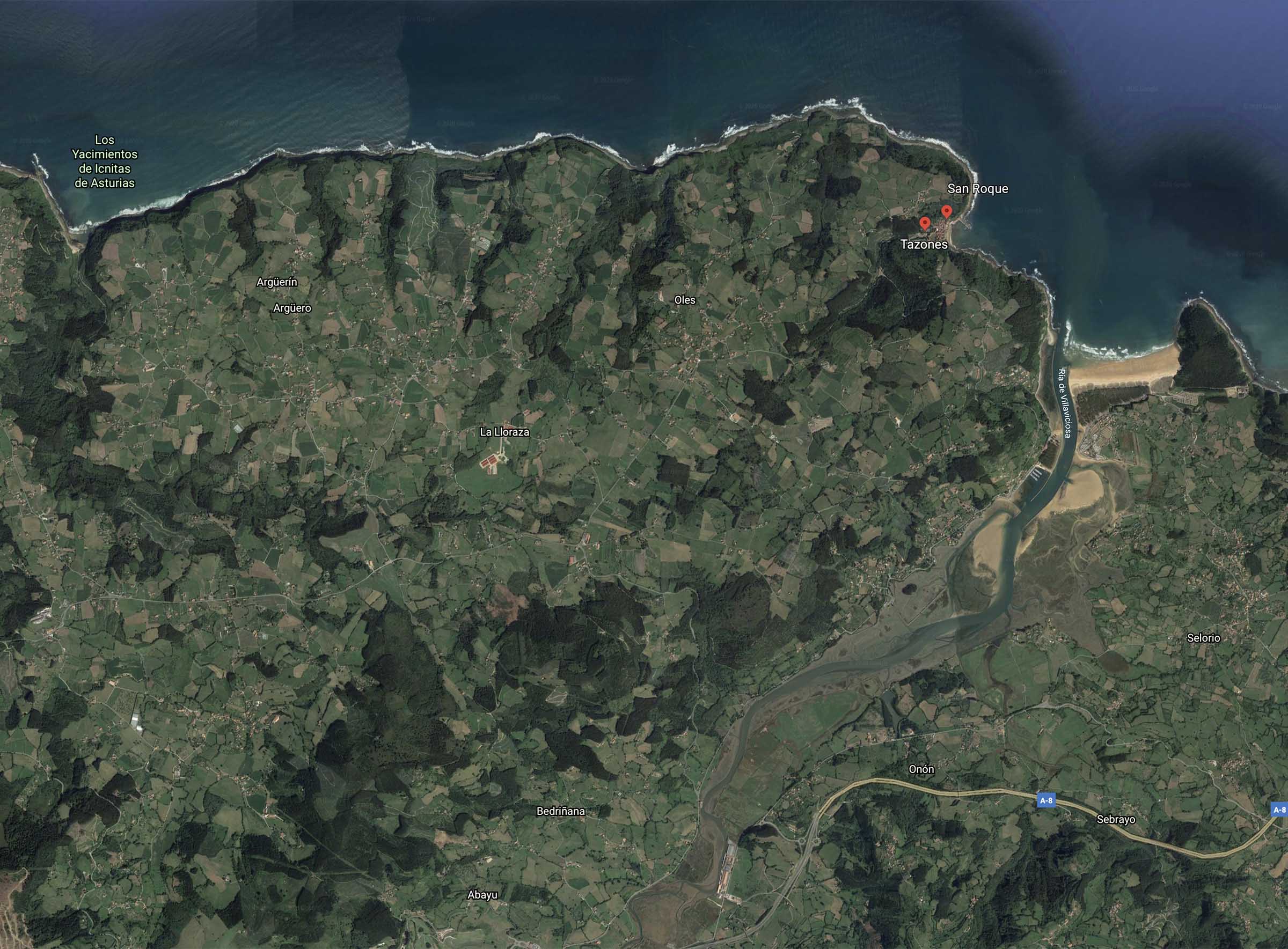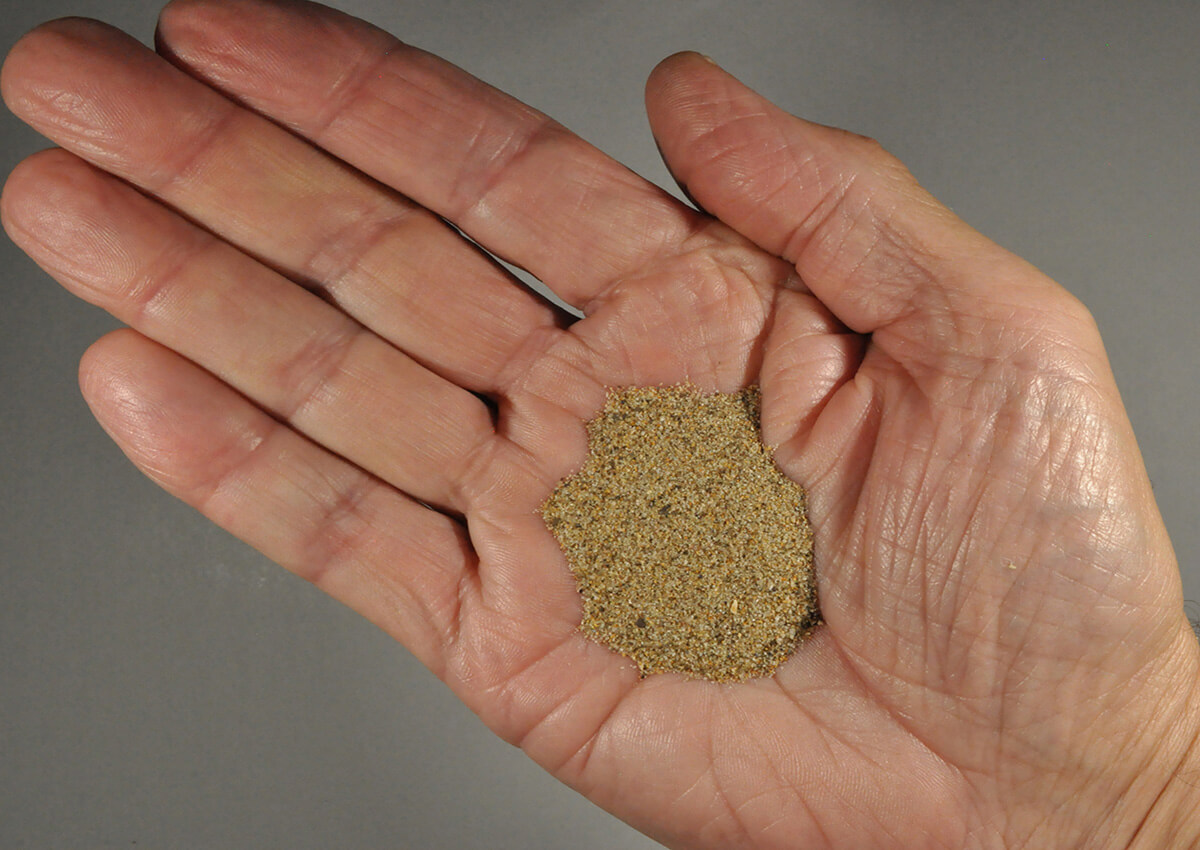
The Iberian Peninsula is geologically complex having been affected by tectonic compressions leading to formation of large submarine canyons and sea mounts in the adjacent Bay of Biscay. The Bay of Biscay has deep depths in some areas and shallow waters in other areas and is known for rough seas associated with winter storms that contribute to the components of the sandy beaches of northern Spain.

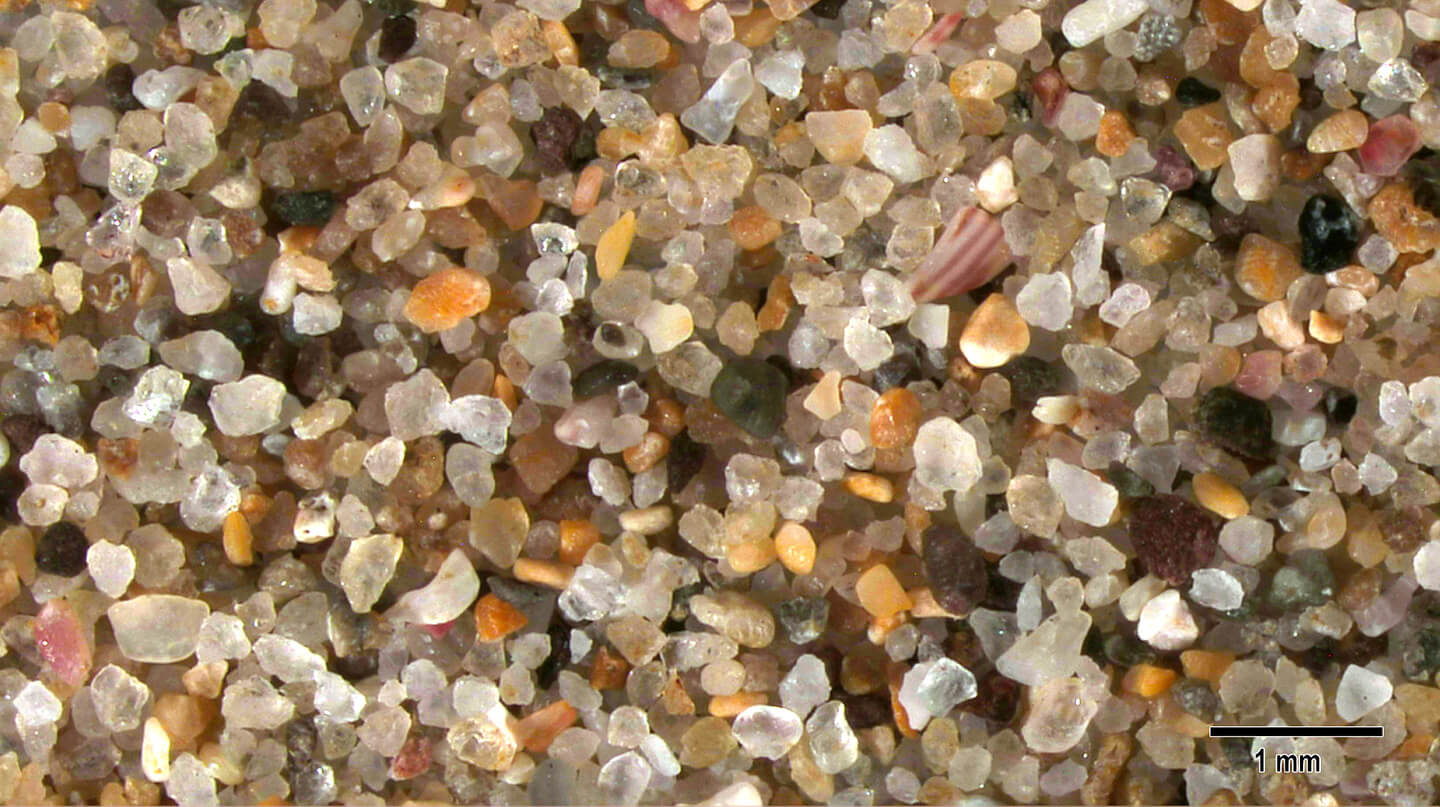
Geographic Overview
Asturias is in a mountainous setting with rugged coastal cliffs and lush greenery and vegetation. Auturias beaches, such as Tazones in northern Spain, face the Catabrian sea that is the southern part of the Bay of Biscay. The diverse benthic habitat in the Catabrian Sea provides hotspots for biodiversity.
Sand Gallery
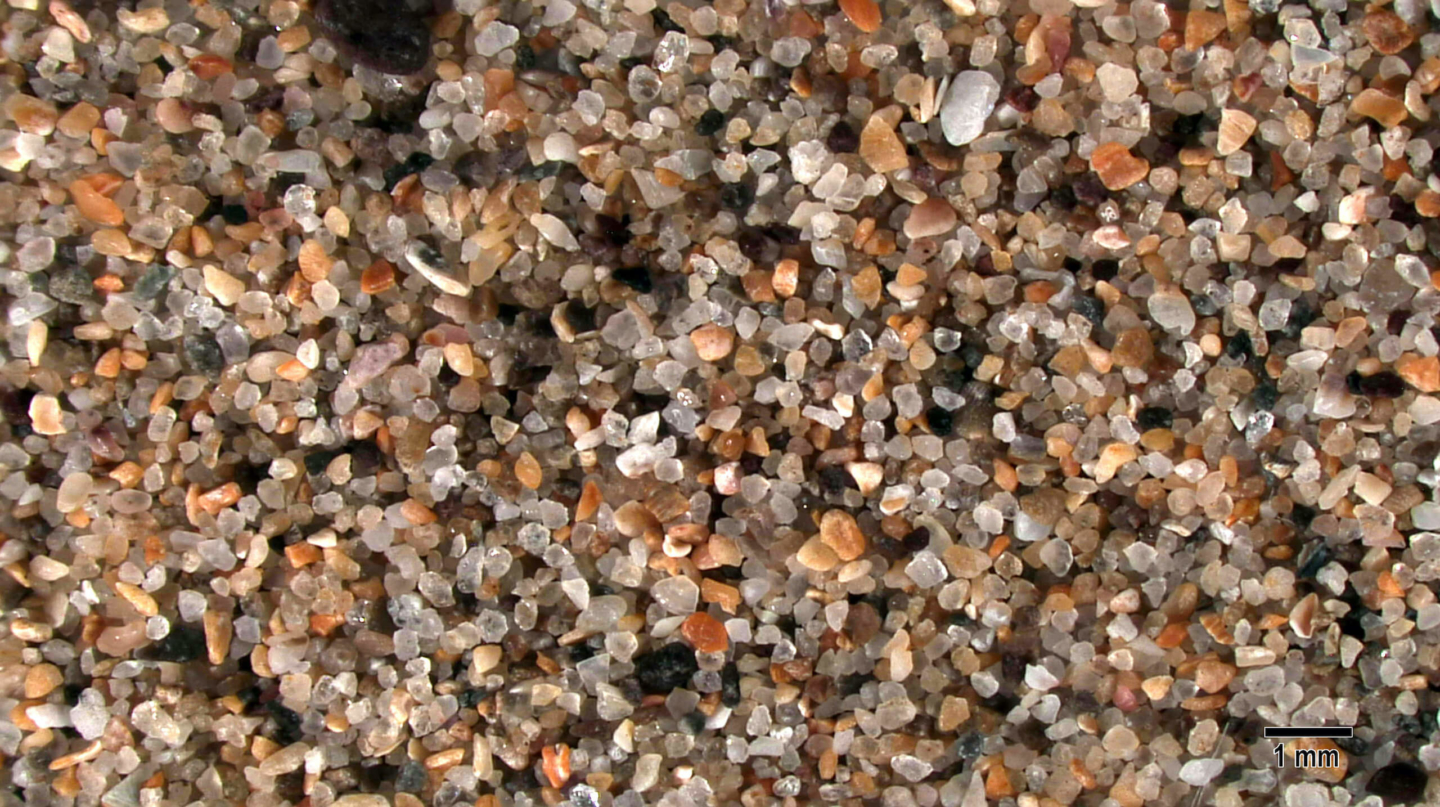
Small clear and cloudy quartz grains along with light tan grains of marine shell fragments make up this mixture of sand. Scattered dark black grains are likely of volcanic origin.
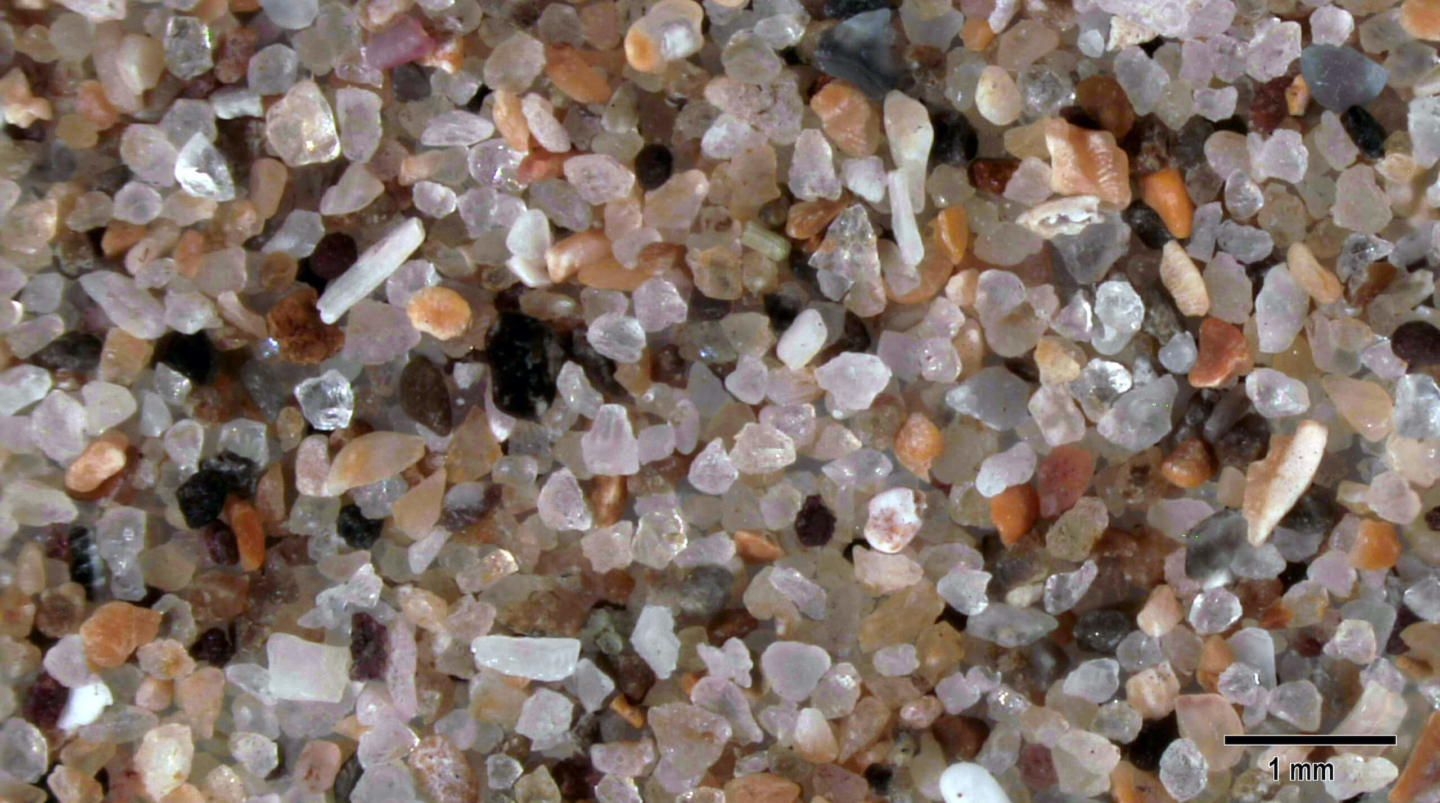
This higher magnification shows clear quartz grains along with white and tan shell fragments and dark grains of volcanic origin. Some of the cloudy white grains with right angle edges are probably feldspar.
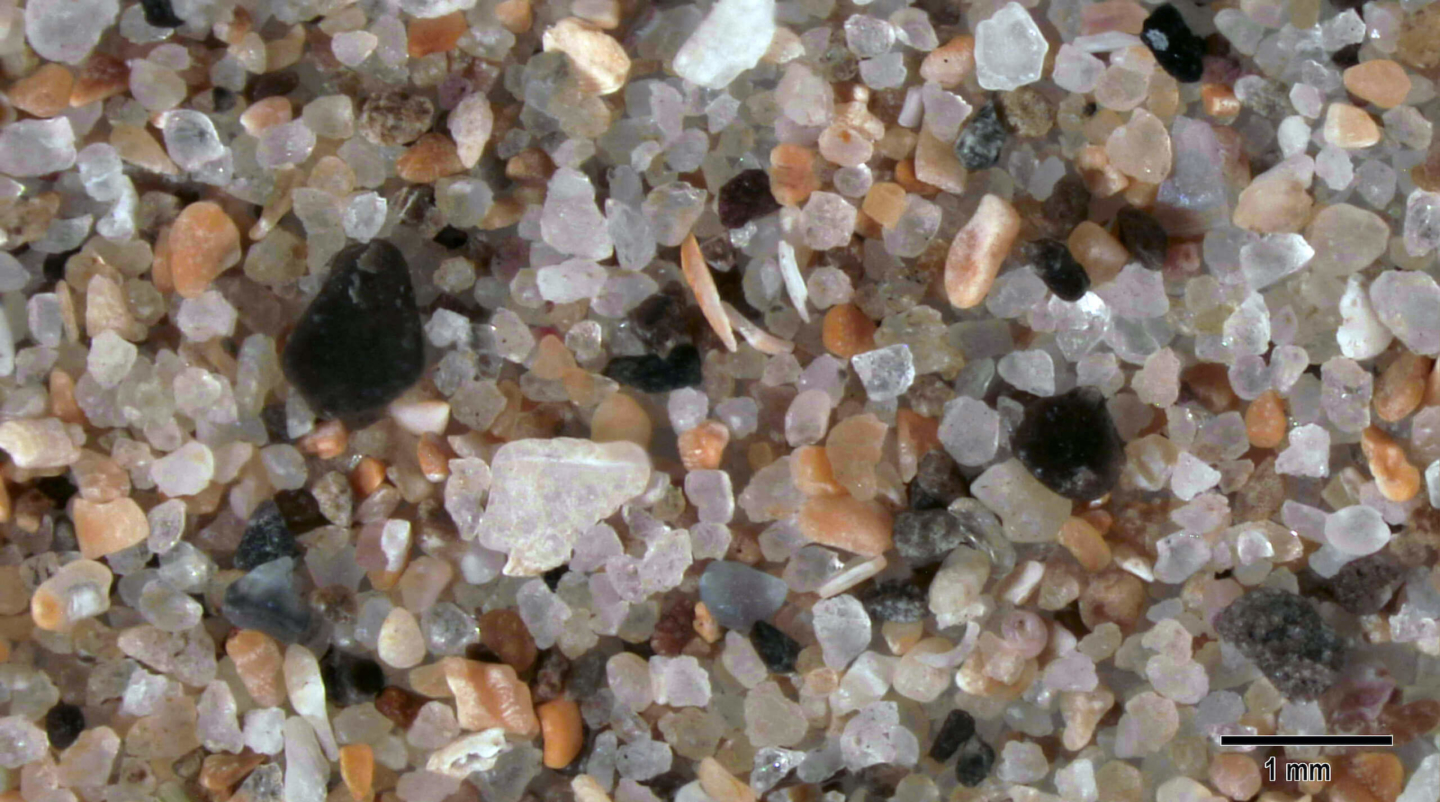
Tan and white sand grains are microscopic fragments of marine shells. Small cloudy grains are probably quartz while dark gray and black grains are likely volcanic in origin.
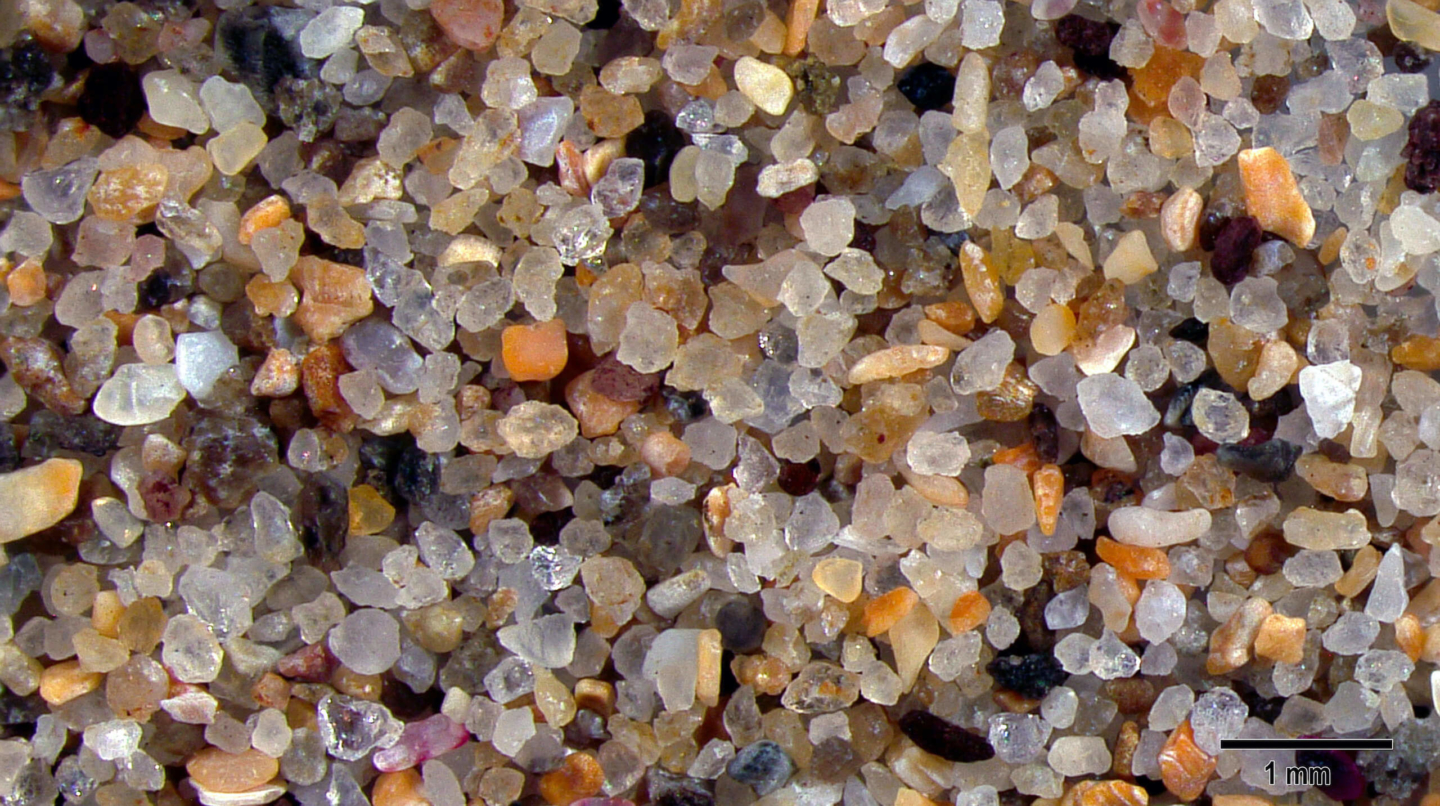
Clear and cloudy quartz gains are mixed with tan fragments of marine grains. A shell fragment with red stripes next to a clear quartz grain is present at the bottom center left of this image.
